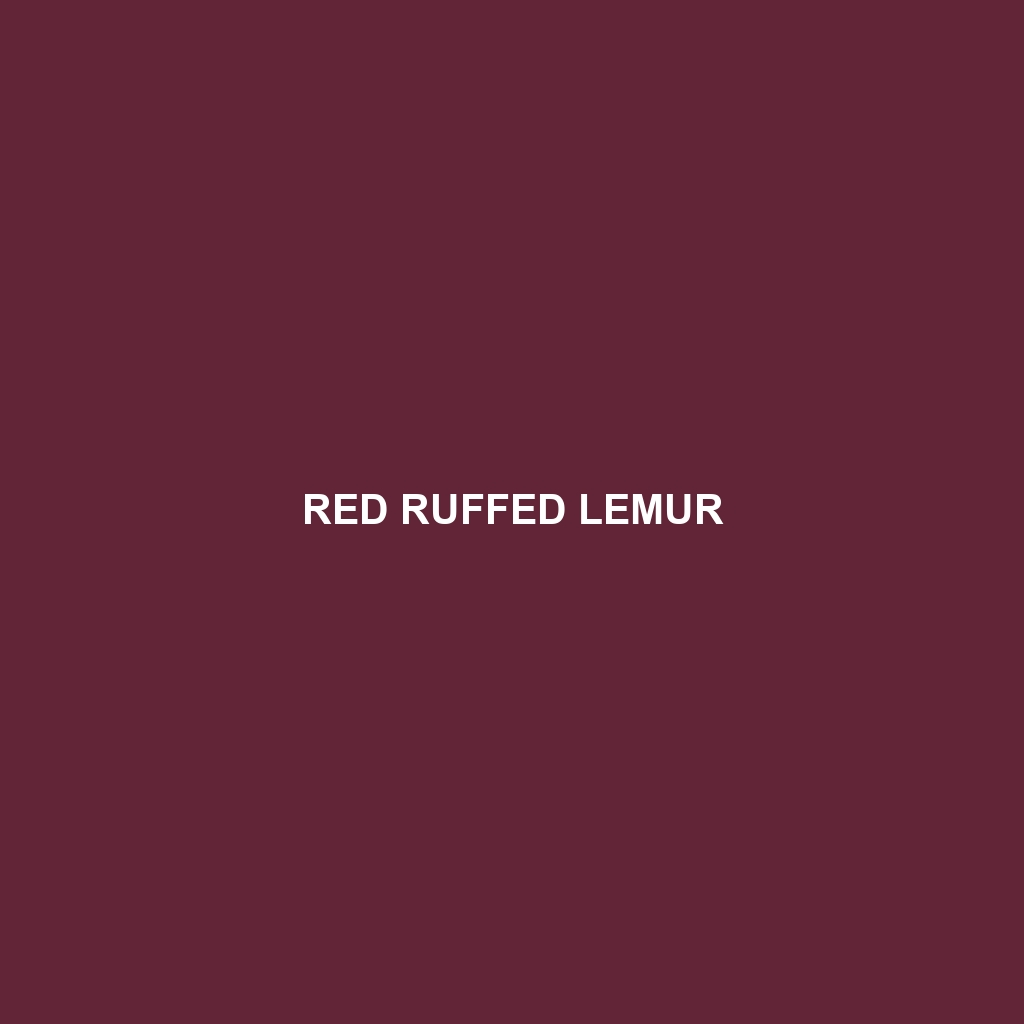Red Ruffed Lemur (Scientific Name: Eulemur rubriventer)
Habitat: The Red Ruffed Lemur is primarily found in the rainforests of Madagascar, specifically in the eastern region. These lemurs inhabit tropical and subtropical moist broadleaf forests, thriving in areas rich in biodiversity. Their preference for dense vegetation provides them with abundant food sources and shelter from predators.
Physical Characteristics: Red Ruffed Lemurs are medium-sized primates, typically measuring between 40 to 55 centimeters in length, excluding their long tail. They are known for their striking appearance, featuring a vibrant reddish-brown fur coat complemented by a black ruff around their neck. Their large, expressive eyes and elongated snouts make them distinctive among lemurs. Their bushy tails, which can be longer than their body, aid in balance as they navigate their arboreal habitat.
Behavior: Renowned for their social structures, Red Ruffed Lemurs often live in small groups that exhibit matriarchal hierarchy. They are diurnal, meaning they are most active during the day. These lemurs are also known for their vocalizations, which include a range of calls used for communication among group members. Known for their acrobatic skills, they use their strong limbs to leap between trees, showcasing their agility in the canopy.
Diet: The diet of the Red Ruffed Lemur primarily consists of ripe fruits, leaves, and nectar, making them important seed dispersers in their ecosystem. They particularly favor fruits from various tree species, which they locate by their keen sense of smell. Their feeding habits significantly contribute to the overall health of Madagascar’s rainforests.
Reproduction: Red Ruffed Lemurs breed seasonally, typically from April to July. After a gestation period of approximately 90 days, females give birth to 2-3 offspring. The young lemurs are cared for by the mother and other group members, learning crucial survival skills during their first year of life. The nurturing behavior observed enhances the social bonds within the group.
Conservation Status: The Red Ruffed Lemur is currently classified as critically endangered by the IUCN Red List. Habitat destruction due to deforestation and illegal wildlife trade are the primary threats facing their population, making conservation efforts pivotal for their survival.
Interesting Facts: One fascinating aspect of the Red Ruffed Lemur is its fully developed sense of smell, which it uses to find food and communicate with others. These lemurs are also known to engage in “play fights,” promoting social interaction among group members.
Role in Ecosystem: As a critical part of Madagascar’s rainforest ecosystem, the Red Ruffed Lemur aids in seed dispersal, helping to maintain the health and diversity of forest flora. Their foraging activities contribute to the ecological balance, making them an integral species for environmental sustainability in their habitat.
